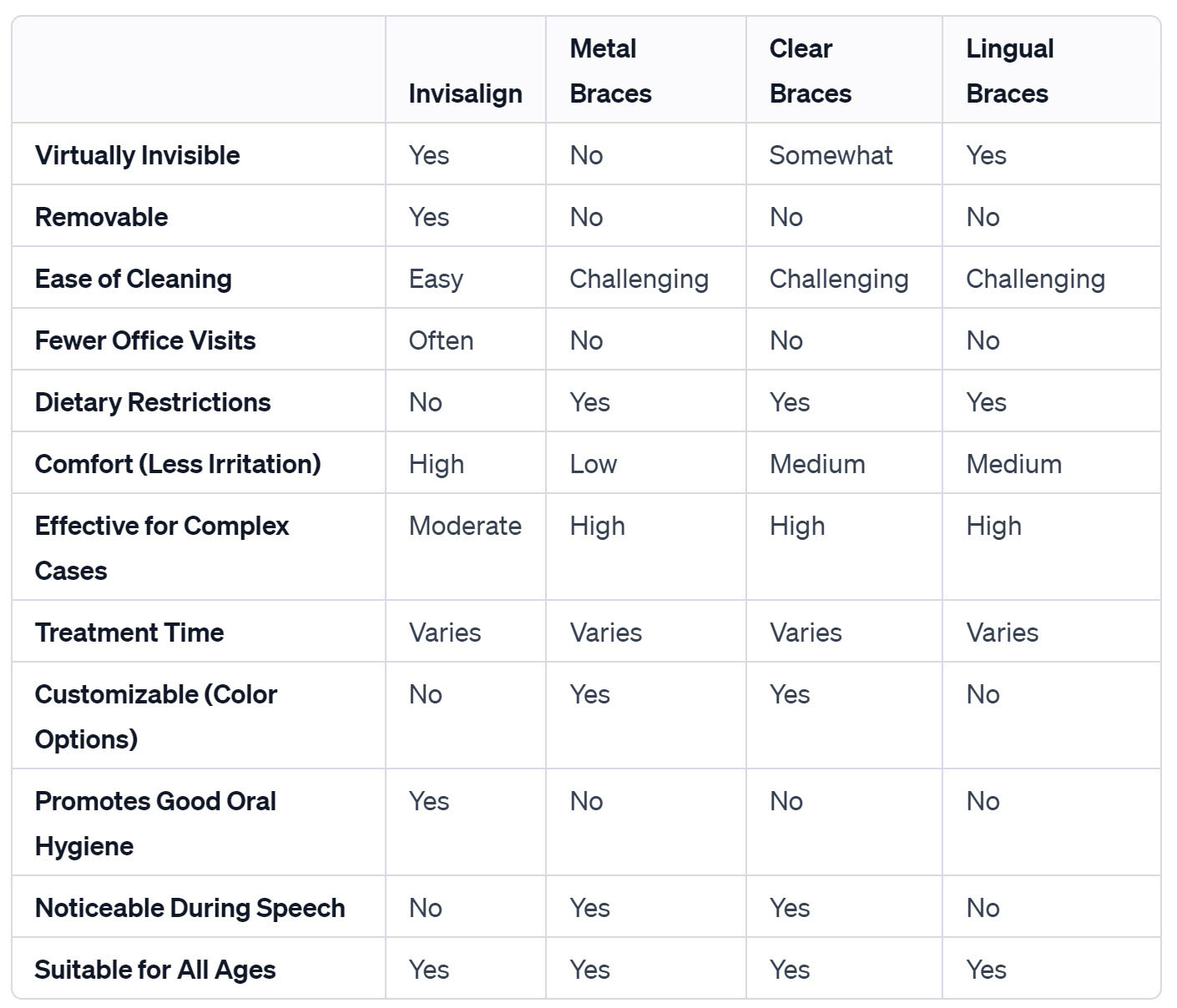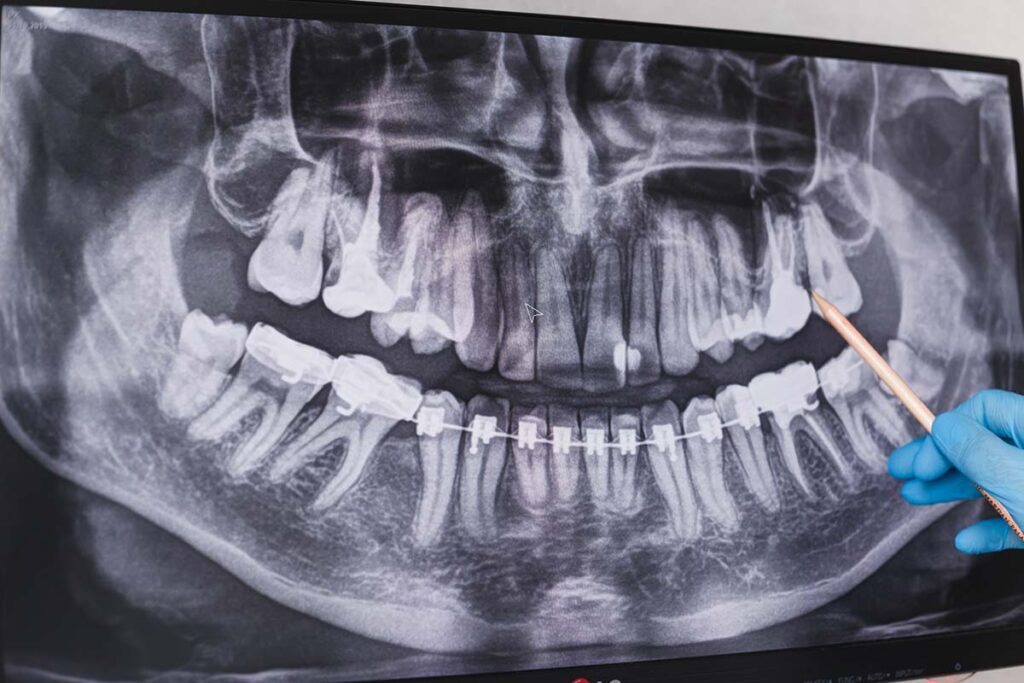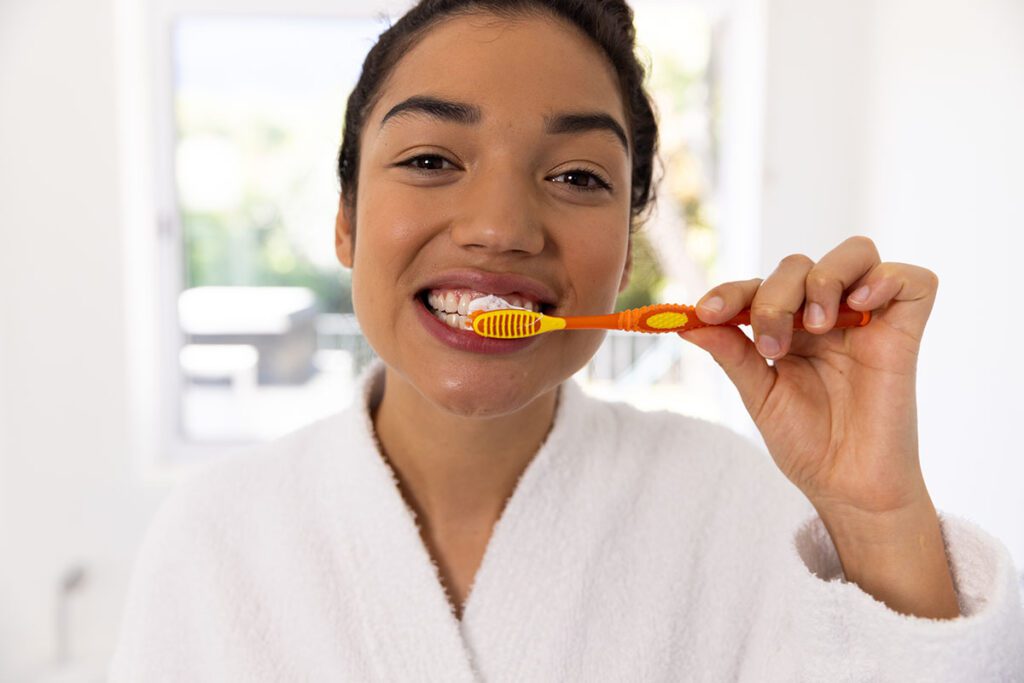Deciding between Invisalign braces vs braces for orthodontic treatment can be a pivotal choice for those dreaming of a straighter smile. The main difference between Invisalign and braces is that Invisalign uses removable, clear plastic aligners, while braces use fixed metal or ceramic brackets with wires. Invisalign offers more aesthetic appeal and easier oral hygiene, but braces may be more effective for complex cases requiring precise tooth movement. Both options have unique benefits, but understanding their differences is crucial in making an informed decision.

Invisalign vs Braces: a Quick Overview
When considering orthodontic treatment options such as Invisalign, metal braces, clear braces, and lingual braces, it’s important to understand the unique benefits each offers. This table provides a clear comparison, helping you decide whether Invisalign aligners, traditional braces, or other options are best suited for your needs, especially when considering aspects like braces cost, treatment time, and maintaining good oral hygiene.
Comparing Invisalign and Braces


Traditional Braces: The Time-Tested Solution
Traditional braces have been the go-to solution for straightening teeth for years. They consist of metal brackets, often referred to as metal braces, attached to your teeth, connected by metal wires. Though sometimes perceived as unsightly, advancements have led to variations like ceramic braces and lingual braces, which are less noticeable.
Invisalign Aligners: The Modern Approach
Invisalign treatment, a form of clear aligner therapy, uses a series of custom-made, virtually invisible plastic aligners. These Invisalign trays are popular for their aesthetic appeal and convenience, especially among adults. Unlike braces, Invisalign aligners can be removed for eating and brushing, promoting better oral health.
Orthodontic Treatment Options for Complex Cases
For complex orthodontic issues, traditional metal braces might be more effective. They offer more control in tooth movement, essential in treating severe misalignments. Invisalign aligners, while effective for most cases, may not be suitable for more complex tooth movements.
Patient Compliance and Lifestyle Considerations
Patient compliance is crucial with Invisalign treatments. The success of Invisalign depends on wearing the aligners for the recommended hours per day. With fixed braces, compliance is less of a concern since they are non-removable.
Maintaining Oral Health During Treatment
Maintaining good oral hygiene is easier with Invisalign clear aligners. The ability to remove aligners allows for thorough cleaning of teeth. Braces require more meticulous cleaning to prevent plaque buildup around metal brackets and wires.
Orthodontist Visits and Treatment Time
Both Invisalign and traditional braces require regular orthodontist visits. However, Invisalign often involves fewer office visits. Treatment time varies, but Invisalign treatment can be quicker for some patients, depending on the orthodontic issues addressed.
Comparing Costs: Traditional Braces vs Invisalign Aligners
Braces cost and Invisalign treatment expenses vary. Many dental insurance plans cover a portion of orthodontic therapy, including both Invisalign and braces. Additionally, offices may offer monthly payment plans to ease the financial burden.
Making Your Decision
In the end, choosing between Invisalign and braces comes down to personal preferences, specific orthodontic needs, and lifestyle considerations. Consulting with an experienced orthodontist is the best way to determine which orthodontic treatment is right for you.
If you’re considering Invisalign aligners or traditional braces, don’t hesitate to call Orthospaceship for a free consultation. Our team is here to guide you through your orthodontic journey, ensuring you achieve the smile you’ve always wanted.
